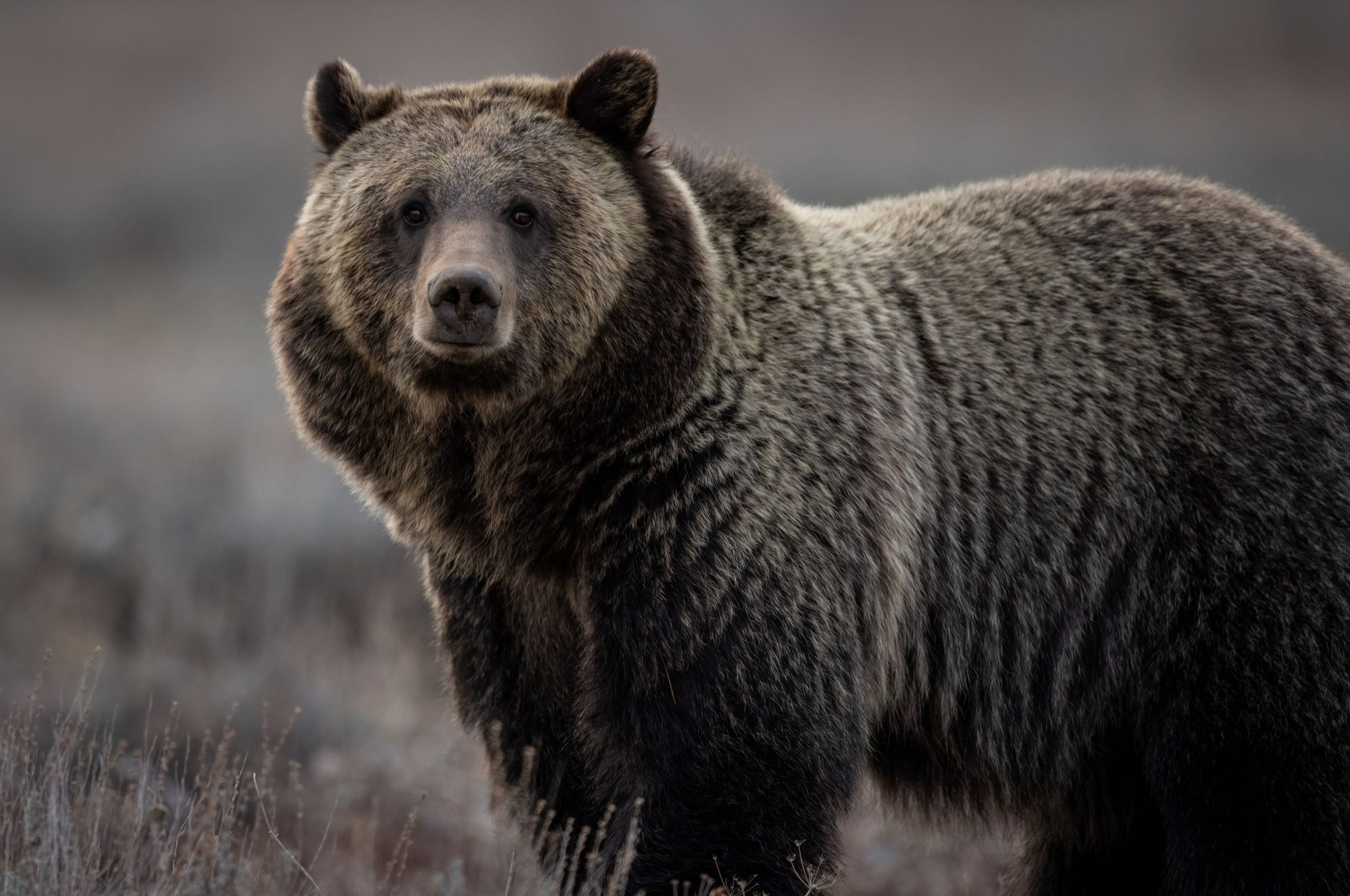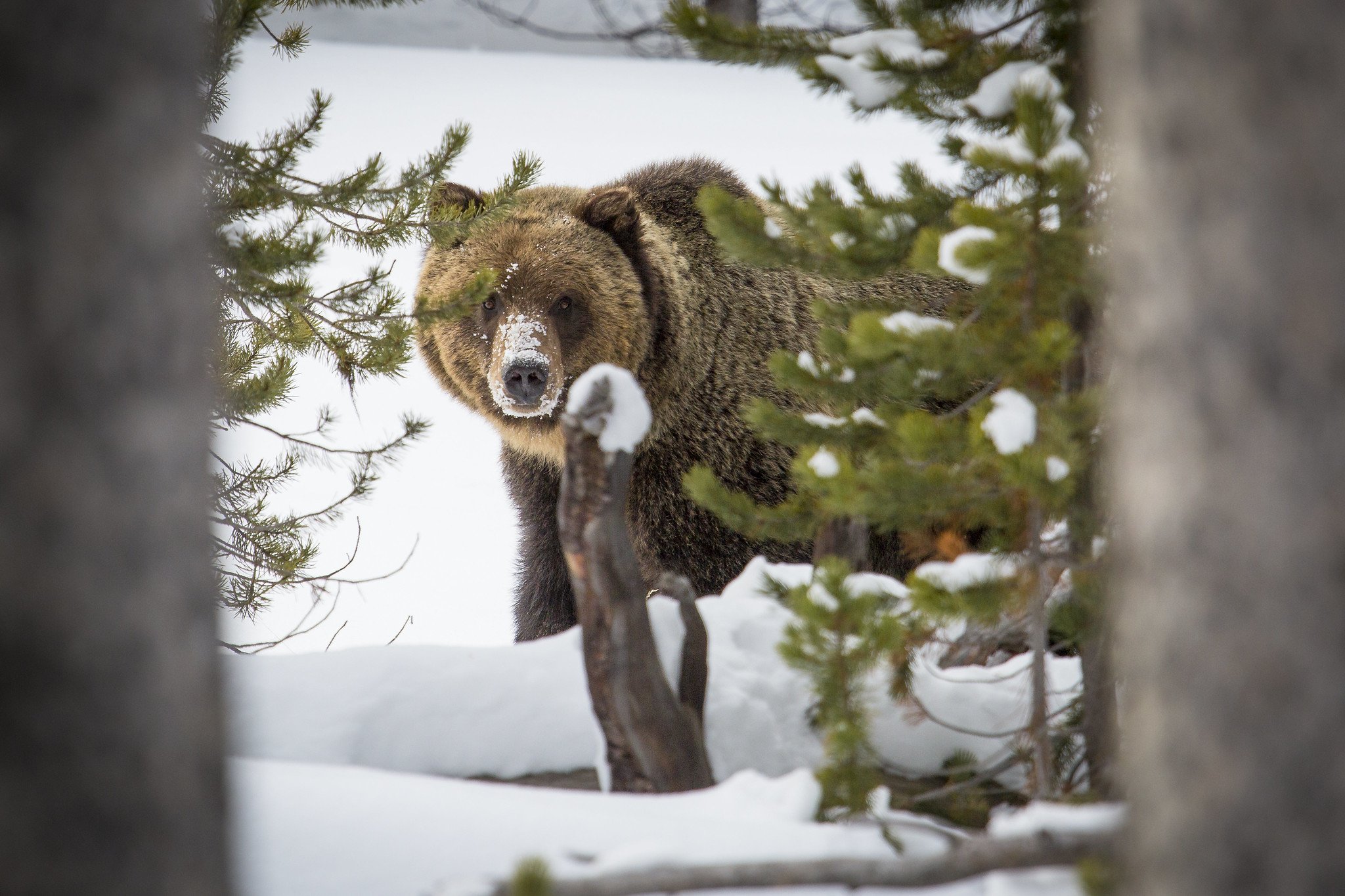Montana Fish, Wildlife & Parks holds public comment period on draft grizzly bear management plan and EIS
UPDATE: Good news! This comment period has been reopened until March 9, 2024.
There is perhaps no more iconic symbol of wild Yellowstone than the grizzly bear. In addition to inspiring awe in the millions of people from around the world each year who are drawn to the Greater Yellowstone region, grizzlies play a vital role in maintaining the health of the Greater Yellowstone Ecosystem (GYE). As such, it is critical that they thrive here for generations to come. Grizzly conservation has been one of GYC’s core priorities since our inception, and we are committed to ensuring a bright future for this important and impactful species.
The state of Montana has a unique opportunity to facilitate long-term conservation of grizzly bears. As home to the two largest grizzly populations in the Lower 48 and the lands between, grizzly management in Montana has a large impact on the future of the species in our region.
You can help shape a better future for grizzly bears, right now.
Currently, you have an opportunity to help shape the way the state manages grizzly bears for years to come. Until February 4, Montana Fish, Wildlife & Parks (FWP) is accepting public feedback on the agency’s new draft grizzly bear management plan and attendant draft environmental impact statement (EIS).
As grizzly range continues to expand into historic habitat across the state, charting a course for an integrated, statewide approach to grizzly management and conservation is timely. The plan will be relevant to on-the-ground management actions regardless of grizzly bear legal status under the Endangered Species Act and integrates the state’s long-term commitments tied to grizzly recovery goals.
Submit your comments on the draft plan and draft EIS before February 4, 2023, using this online form.
Want some guidance on what to say? The Greater Yellowstone Coalition team has been hard at work analyzing the content of both the draft management plan and the draft EIS. Based on our analysis, we have identified key areas of improvement for the plan that we recommend you address in your feedback to FWP.
To ensure your comments are as specific, substantive, and effective as possible, please craft them in your own words, incorporating the following points. And if you are a Montanan, be sure to mention that.
Please ask Montana Fish, Wildlife & Parks to consider:
Including more specific direction via goals and monitoring in the draft plan for ensuring natural or functional (i.e., not human assisted) connectivity between grizzly populations over the long-term.
Emphasizing the continued importance of conflict prevention efforts statewide, regardless of the relevance of a given geography to facilitating connectivity.
Prioritizing a cautious approach to any future hunting season, if the Fish and Wildlife Commission votes in favor of holding a hunt.
Conducting meaningful tribal consultation regarding the draft plan and EIS.
Submit your comments on the draft plan and EIS before February 4, 2023 using this online form.
Hungry for more? Here’s a summary of GYC’s analysis of the draft plan and draft EIS that provides more details on our recommendations.
GYC is confident that grizzly bears will thrive in our region long into the future if conflicts between people and bears are minimized, bears have access to secure core habitat, and the population is both stable and connected to other grizzly populations outside the Greater Yellowstone Ecosystem. These principles drive all facets of our grizzly conservation efforts, and are the basis from which we evaluated the draft Montana plan.
CONNECTIVITY
We appreciate FWP’s proposed commitment to encouraging connectivity between grizzly populations, and the associated certainty this commitment could provide in the context of conflict management, future hunting, and conflict response and capture protocol. GYC has long advocated for interconnected grizzly populations in the Lower 48 because evidence suggests this sort of structure could ensure grizzlies remain resilient to environmental shifts and changes over time.
However, we are concerned that FWP’s draft plan lacks the specificity needed to achieve the proposed goal of encouraging connectivity. The underlying assumption of the plan is that the occasional translocation of a bear from the Northern Continental Divide Ecosystem (NCDE) to the GYE to support genetic augmentation, alongside conflict reduction efforts in lands important for connectivity, are adequate to support the stated goal. While we agree that both components may be necessary, we believe they are not sufficient for securing interconnected populations in the state. Our vision is that natural connectivity between recovery ecosystems supports sustainable grizzly bear populations over the long-term and usurps the need for invasive interventions such as translocation of bears. Management direction around connectivity must be supported by robust and measurable objectives that clearly define what is needed (from a population standpoint) to support natural connectivity, as well as a plan for monitoring and measuring progress toward those objectives and a realistic look at current resource gaps in being able to achieve such targets. This detail is lacking in the draft plan.
CONFLICT AND GRIZZLY MORTALITY
FWP’s commitment to effective and timely conflict prevention and response is clear in the draft plan, and we appreciate the proposed direction for building on existing efforts. However, the plan is somewhat vague regarding FWP’s actions in the event of conflict incidences. While flexibility for bear managers to evaluate each incident case-by-case is important, a lack of specificity around lethal removals could undermine conservation goals outside of recovery zones, where FWP is not committed to specific mortality limits. FWP’s plan indicates that more aggressive conflict response (i.e., lethal removal) will be favored in geographies that are not conducive to facilitating connectivity between core populations. While we can understand FWP’s need to provide more certainty regarding conflict response protocol to communities negatively impacted by grizzly range expansion, we are concerned that this approach could disincentivize conflict prevention resources and projects in areas not deemed important for connectivity.
While GYC is opposed to sport hunting of grizzly bears, we appreciate FWP’s transparency in outlining proposed frameworks for a future hunting season (contingent upon grizzlies being delisted from the Endangered Species Act), and recognition of the divergent public opinions on such a controversial issue. One of the proposed outlines for a future hunting season integrates measures to ensure a conservative and reasonable hunting approach. In the event of a future hunt we would advocate for such caution. In order to achieve connectivity between recovery ecosystems, it will be critical that any future hunt is limited within intervening lands.
COLLABORATION AND CONSULTATION
FWP’s draft grizzly bear management plan is a culmination of several years of processes to better understand public opinions surrounding grizzly bear management. Most notably, the recommendations of the Montana Grizzly Bear Advisory Council (GBAC) underpin many elements of the plan. GYC’s former executive director, Caroline Byrd, was a member of the GBAC and showed tremendous leadership in advocating for GYC’s grizzly conservation goals through the deliberations. While FWP has engaged the public in several meaningful ways to develop this draft plan, we believe there is considerable room for improvement around consultation with other governments. We are particularly concerned by the lack of discourse with Tribes, and integration of various tribal perspectives into components of the Environmental Impact Statement. We strongly encourage FWP to conduct formal tribal consultation prior to issuing a revised plan.
To ensure your comments are as specific, substantive, and effective as possible, please craft them in your own words, incorporating the following points. And if you are a Montanan, be sure to mention that.
Please ask Montana Fish, Wildlife & Parks to consider:
Including more specific direction via goals and monitoring in the draft plan for ensuring natural or functional (i.e., not human assisted) connectivity between grizzly populations over the long-term.
Emphasizing the continued importance of conflict prevention efforts statewide, regardless of the relevance of a given geography to facilitating connectivity.
Prioritizing a cautious approach to any future hunting season, if the Fish and Wildlife Commission votes in favor of holding a hunt.
Conducting meaningful tribal consultation regarding the draft plan and EIS.
Submit your comments on the draft plan and EIS before February 4, 2023 using this online form.
GYC believes the state of Montana has a unique opportunity to facilitate long-term conservation of grizzly bears through this new management plan. Montana has leaders and partnerships with the ability to make connectivity between the two largest grizzly populations in the Lower 48 a reality. Because of this, FWP is uniquely poised to have a powerful positive impact on grizzly conservation all while maintaining the viability of the working lands that are part of the social and economic fabric of our state.
Your voice matters. Please help GYC and others protect grizzly bears in Montana long into the future.
—Brooke Shifrin, wildlife conservation coordinator
The Greater Yellowstone Ecosystem is the land of 49+ Indigenous Tribes who maintain current and ancestral connections to the lands, waters, wildlife, plants and more.





